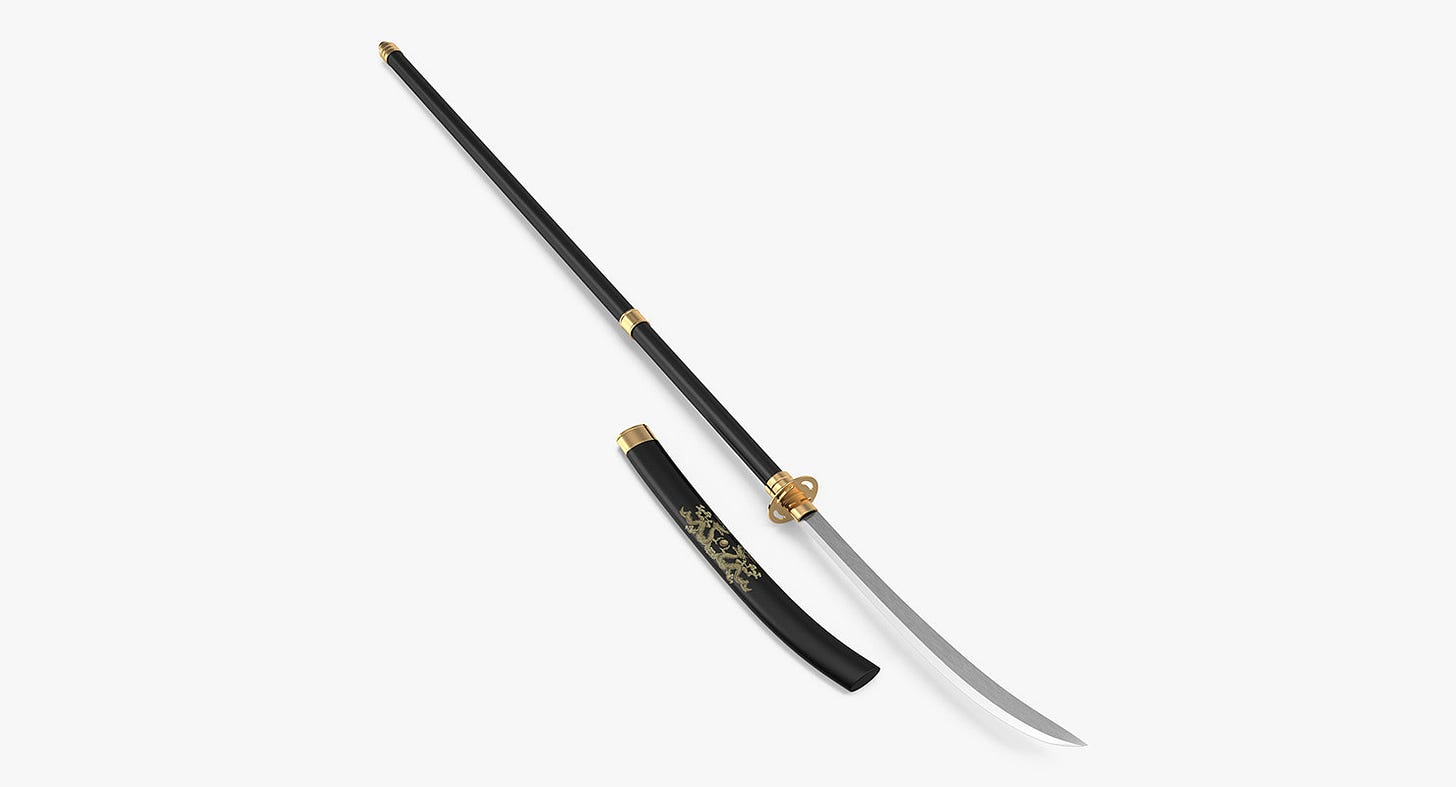There is not much written about Nakazawa Koto but she certainly was an interesting character!
Koto was a Onna-bugeisha (female warrior) and was born in Kōzuke Province (modern Gunma Prefecture) in 1839. She was taught martial arts from an early age and became very skilled in Kenjutsu (Japanese sword) and her skill with the naginata surpassed even that of her father, Magouemon, who taught her. Naganata is a pole weapon and one of several varieties of traditionally made Japanese blades. She also studied Hoshin-Ryu kobudo and used Kusarigama – (chain & sickle).
In 1863, dressed as a man, Koto accompanied her brother Sadamasa to Kyoto. Together they joined the Roshigumi, a group protecting the Tokugawa shogun part of the Kyoto defenders group led by Kiyokawa Heihachiro. Koto was tall for a woman at 170cm. In the Edo period, the average height in Japan was 155cm for men and 143cm for women. Even in the modern world, 170cm is quite tall for a woman, so she was surprisingly tall for the time, which contributed to her successful disguise as a man.
After her first mission was over, she became one of the samurai (kind of like modern day police) of Edo (the old name of Tokyo), and she always dressed as a man when she was on duty.
In fact, it is folklore that townswomen approached her often while she was patrolling; she was a skilled and handsome samurai in their eyes. Off duty, when she changed into kimono, men approached her often.
These were peaceful times in Japan. After a brutal and extremely violent and bloody civil war period known as the Warring States Period, Japan had finally been united as one in 1615 (Battle of Osaka Summer battle) under the Shogun (samurai government) rule of Tokugawa Ieyasu. Japan enjoyed some 260 years of peace until the Meiji Restoration. The samurai had become bureaucrats rather than warriors. Without any warfare or conflict for over two centuries, the samurai had lost their original purpose of fighting. Hence, modern day martial arts were born.
This was a political and social revolution in Japan from 1866 to 1869 that ended the power of the Tokugawa shogun and returned the Emperor to a central position in Japanese politics and culture.
A new government was installed and of course, war broke out between the new and old governments. Koto fought on the side of the old.
While close to 5,000 samurai were killed in the war, Koto survived and lived on to see a revamped and modernizing Japan… for another 58 years!
She said “I will not marry a man who’s weaker than me.”
She died single at 88. There were only a handful female samurai in historical records, unfortunately.
Female warriors
Long before the term "samurai" came into usage, Japanese fighters were skilled with the sword and spear. These warriors included some women, such as the legendary Empress Jingu, who lived between approximately 169 and 269 A.D.
For thousands of years, certain upper-class Japanese women learned martial arts and participated in battles right alongside the male samurai. Between the 12th and 19th centuries, many women of the samurai class learned how to handle the sword and the naginata primarily to defend themselves and their homes. In the event that their castle was overrun by enemy warriors, the women were expected to fight to the end and die with honor, weapons in hand.
Mentioning another female warrior, on the same side as Koto
Nakano Takeko lived a short life from 1847 to 1868, the daughter of an Aizu official. She was trained in the martial arts and worked as an instructor during her late teens. During the Battle of Aizu, Nakano Takeko led a corps of female samurai against the Emperor's forces.
She fought with a naginata also. Takeko was leading a charge against the imperial troops when she took a bullet to her chest. Knowing that she would die, the 21-year-old warrior ordered her sister Yuko to cut off her head and save it from the enemy. Yuko did as she asked, and Nakano Takeko's head was buried under a tree.
The 1868 Meiji Restoration that resulted from the Emperor's triumph in the Boshin War (new government vs. old government) marked the end of an era for the samurai.
To the very end, though, samurai women like Nakazawa Koto and Nakano Takeko fought (and died) as bravely as their male counterparts.








Nice work Rionne.